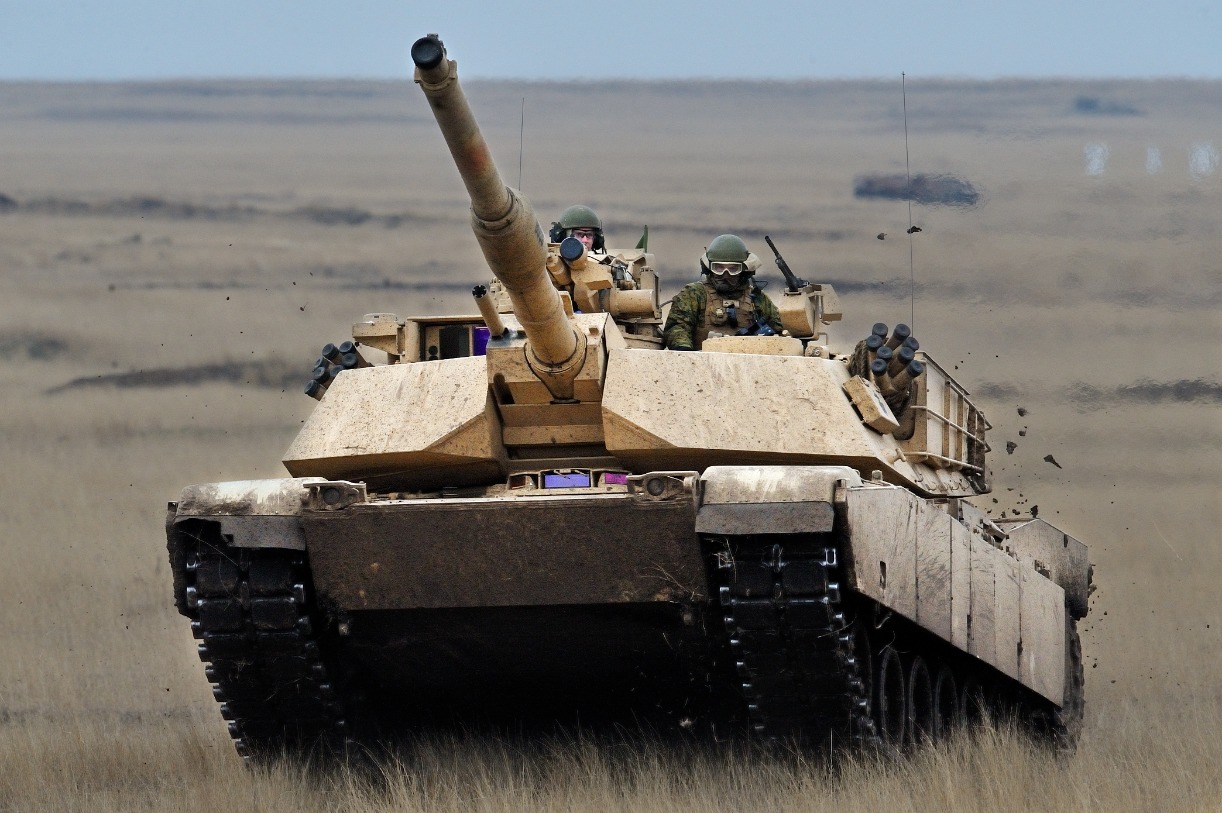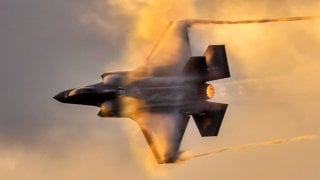America’s Military Strategy: Can We Handle Two Wars at Once?
Does the United States need the ability to fight more than one major war at a time? The Senate Armed Services Committee has been asking this question of late, and it is right to do so.
Does the United States need the ability to fight more than one major war at a time?
The Senate Armed Services Committee has been asking this question of late, and it is right to do so.
Today, according to official Pentagon planning doctrine, the United States could not. One need not believe literally in a “new axis of evil” that includes Russia, North Korea, Iran, and China to worry that if America and its allies wound up in a fight against one of these four states, another one might consider opportunistic aggression. This could be particularly concerning if the potential adversary believed it could win fast, creating a fait accompli that the United States would be challenged to reverse even after concluding war in another theater.
For many decades, seeking to ensure deterrence and prevent opportunistic aggression by a second foe if engaged already against a first, the United States aspired to some variant of a two-war capability. During the Cold War, the United States generally aimed to be able to fight a major war alongside NATO allies against the Soviet bloc in Europe and at least one other simultaneous conflict (like the Korean or Vietnam war) elsewhere. Accordingly, the U.S. military during the Cold War was generally 60 to 100 percent larger than it is today.
Once the Berlin Wall fell in 1989, the United States cut back its armed forces but kept a two-war planning goal. However, those two wars were imagined to be against much less capable foes: the likes of Iraq, Iran, North Korea, or perhaps Syria. In fact, the United States wound up fighting two overlapping wars for many years in Iraq and Afghanistan—though they differed from the typical scenarios envisioned in these force-sizing paradigms since they were long and moderate in scale rather than short and big (like Operation Desert Storm in 1991). Because of their duration, the United States had to stagger its peak efforts in those wars, emphasizing Iraq under President George W. Bush and Afghanistan in the first term of President Obama.
Starting around 2015, things changed again. Pentagon planners, starting with Secretary of Defense Ash Carter and Joint Chiefs Chairman General Joseph Dunford, created a “4+1” threat framework with Russia and China joining Iran, North Korea, and transnational terrorism on the Pentagon’s list of top concerns. Then, under Secretary of Defense Jim Mattis and Secretary Mark Esper during the Trump years, the Pentagon prioritized Russia and China; the Biden administration under Secretary of Defense Lloyd Austin has kept a very similar National Defense Strategy.
According to official doctrine [media.defense.gov], today’s U.S. military should have the capacity to do the following all at once:
-Together with allies, fight and defeat China or Russia (but not both at the same time), presumably in conflicts centered on the western Pacific region and eastern European region, respectively,
-Defend the American homeland while also maintaining a nuclear deterrent,
-Deter North Korea and Iran (without specifying exactly how), and
-Maintain momentum against transnational violent extremist organizations as part of the so-called “war on terror.”
But this is still just a one-war framework. Is that enough military for today’s world?
Before jumping to the conclusion that we need a big defense buildup, a few other considerations are in order. Leave aside the fact that, at nearly $900 billion, America’s national defense budget already exceeds the Cold War peak and is roughly triple China’s and six times Russia’s—at a time when the U.S. structural federal deficit of more than $1 trillion a year makes a big defense buildup challenging to imagine. More to the point, the four nemeses mentioned above, while certainly in cahoots with each other already on some issues, are not likely to fight literally for each other. For any of them, going to war deliberately against the United States would be a decision of huge consequence not likely to be reached just because America seemed temporarily preoccupied elsewhere. In addition, the Army today cannot even recruit to fill out the currently desired troop strength and most of the other services have been struggling to make personnel targets as well.
Most of all, for both the Trump and Biden administrations, the quality of the armed forces has been rightly seen as a higher priority than their size. Defense planners have wanted to focus on improving military lethality, survivability, sustainability, resilience, and adaptability in an era of rapid technological change.
The United States does need to buttress its deterrence of simultaneous, opportunistic aggression. But the right standard for doing so is probably to ensure that the country has sufficient key capabilities for each of the four key potential foes that—with allies—it could prevent a quick, successful aggression by any of them even while concentrating most of its forces on a single big war. As recently argued compellingly by Thomas Mahnken as well, another key benefit of a multi-war planning framework is that it would, in effect, create a strategic reserve of munitions. By producing and pre-stationing ordnance for several wars at once in key overseas theaters on a larger scale than today, the United States would, in effect, create a hedge against a single war going longer or taking more weaponry than initially expected. This policy would also buy time to start manufacturing more weapons to restore a rock-solid multi-theater capability if and when a war broke out in one place. Fortunately, these are attainable and affordable goals that the National Defense Strategy already pays lip service to. We need to ensure that we have the capabilities, not just the right words.
Some of the key additional capabilities that might be needed to support such a strategy include a couple of squadrons of dedicated “fifth generation” fighter aircraft for Korea (to attack North Korean missile launchers early in any war, limiting damage to Seoul); unmanned submarines stationed in the western Pacific with anti-ship sensors and missiles to help Taiwan resist a Chinese invasion attempt; vertical-lift aircraft on Okinawa with ordnance usable for the same purpose; dedicated missile defense systems for the Middle East of the type that helped stymie Iran’s recent missile and drone barrage against Israel; and a brigade of U.S. ground troops backed up by fighters and attack helicopters in the Baltic states as a permanent deterrent against Russian aggression there. Again, augmentations of some sensor networks and munitions stockpiles also make sense.

The price tag for this sort of modest force expansion would hardly be trivial but would not exceed tens of billions of dollars a year. It could be partially funded by selective cuts in the defense budget elsewhere. As we gear up for a presidential election this fall and a new defense review next year, these issues of possible simultaneous war—but simultaneous deterrence—should be front and center in the American strategic debate.
About the Author: Michael E. O'Hanlon
Michael E. O’Hanlon is a senior fellow and director of research in Foreign Policy at the Brookings Institution, where he specializes in U.S. defense strategy, the use of military force, and American national security policy. He directs the Strobe Talbott Center on Security, Strategy and Technology, as well as the Defense Industrial Base working group, and is the inaugural holder of the Philip H. Knight Chair in Defense and Strategy. He co-directs the Africa Security Initiative as well. He is an adjunct professor at Columbia, Georgetown, and George Washington universities, and a member of the International Institute for Strategic Studies. He also serves as a member of the Defense Policy Board at the U.S. Department of Defense. O’Hanlon was a member of the external advisory board at the Central Intelligence Agency from 2011-12. O’Hanlon’s latest book, “Military History for the Modern Strategist: America’s Major Wars Since 1861” (Brookings and Rowman & Littlefield, 2023) was published in January 2023.
All images are Creative Commons or Shutterstock.


